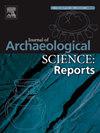Cities as drivers of change in plant exploitation and landscape during Roman times: The case of Scallabis (western Iberia)
IF 1.5
2区 历史学
0 ARCHAEOLOGY
引用次数: 0
Abstract
Cities played a crucial role in spreading the new Roman way across a vast Empire. This included the dissemination of different crops and processed food products such as wine, olive oil and fish sauces. Besides, the concentration of population in cities put pressure on local resources, not just for food, but also for wood, needed for construction and fuel.
Differences between Bronze Age, Iron Age and Roman archaeobotanical assemblages from Alcáçova de Santarém (Portugal), in the former city of Scallabis, document changes in plant use and consumption which are illustrative of the socio-economic and environmental impacts of the Roman conquest. The increasing use of wood from trees, as evidenced by charcoal records, indicates a considerable loss of forest cover during Roman times, adding to the existing trend of deforestation. Differences in crops are also clear. While cereals, which were the main staples, remained the same, there was a diversification of pulses, fruits and condiments in the Roman levels. Most of these crops were already in Iberia before the conquest but they are not frequently recorded in sites from its westernmost areas and are absent in the Iron Age assemblages of Scallabis.
The archaeobotanical record of Alcáçova de Santarém demonstrates the impact of the Roman conquest on the exploitation and consumption of plant resources. Although landscape and socio-economic changes, influenced by Mediterranean models, preceded the Roman rule, these were enhanced in this period. Cities were key elements in this transformation. The study of urban areas like Scallabis shows how they were central to extensive networks through which people and ideas circulated, shaping new needs and preferences, which in turn posed significant challenges for fulfilment.
城市是罗马时代植物开发和景观变化的驱动力:斯卡拉比斯(伊比利亚西部)案例
在幅员辽阔的罗马帝国,城市在传播新的罗马方式方面发挥着至关重要的作用。这包括传播不同的农作物和加工食品,如葡萄酒、橄榄油和鱼酱。此外,人口集中在城市对当地资源造成了压力,不仅是食物,还有建筑和燃料所需的木材。来自斯卡拉比斯故城 Alcáçova de Santarém(葡萄牙)的青铜时代、铁器时代和罗马考古植物组合之间的差异,记录了植物使用和消费的变化,说明了罗马征服对社会经济和环境的影响。木炭记录显示,对树木木材的使用越来越多,这表明罗马时代森林覆盖率大幅下降,加剧了现有的森林砍伐趋势。农作物的差异也很明显。虽然作为主要主食的谷物没有变化,但在罗马时期,豆类、水果和调味品出现了多样化。这些作物中的大多数在罗马征服伊比利亚之前就已经存在,但在伊比利亚最西部地区的遗址中却很少有记载,在斯卡拉比斯铁器时代的遗物中也没有发现。虽然在罗马统治之前,受地中海模式的影响,景观和社会经济发生了变化,但在这一时期,这些变化得到了加强。城市是这一转变的关键因素。对斯卡拉比斯等城市地区的研究表明,它们是如何成为广泛网络的中心,通过这些网络,人们和思想得以流通,形成新的需求和偏好,反过来又为满足这些需求和偏好提出了重大挑战。
本文章由计算机程序翻译,如有差异,请以英文原文为准。
求助全文
约1分钟内获得全文
求助全文
来源期刊

Journal of Archaeological Science-Reports
ARCHAEOLOGY-
CiteScore
3.10
自引率
12.50%
发文量
405
期刊介绍:
Journal of Archaeological Science: Reports is aimed at archaeologists and scientists engaged with the application of scientific techniques and methodologies to all areas of archaeology. The journal focuses on the results of the application of scientific methods to archaeological problems and debates. It will provide a forum for reviews and scientific debate of issues in scientific archaeology and their impact in the wider subject. Journal of Archaeological Science: Reports will publish papers of excellent archaeological science, with regional or wider interest. This will include case studies, reviews and short papers where an established scientific technique sheds light on archaeological questions and debates.
 求助内容:
求助内容: 应助结果提醒方式:
应助结果提醒方式:


